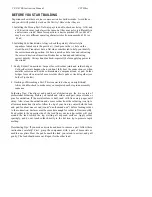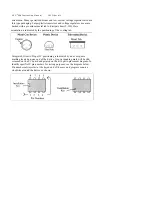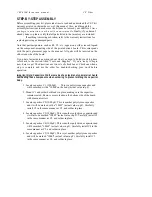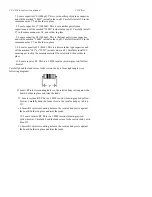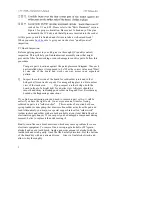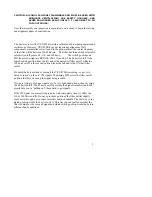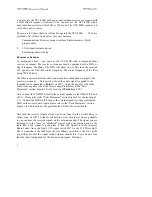
You may use the VEC-820K with any communications receiver or scanner with
a BFO (Beat Frequency Oscillator). You can also use the VEC-820K with a
ham-radio transceiver in either LSB or CW mode. The VEC-820K requires a 9-
volt battery power source.
There are a few items that you will need to operate the VEC-820K.
We have
provided a list of these items below for your convience.
Communications Receiver, scanner. or Ham Radio transceiver Nyith
proper cables.
0
9-Volt transistor radio batten
External speaker with clip
Receiver or Scanner
As mentioned above . you can use the VEC-820K with a communications
receiver or scanner. The receiver or scanner must be equipped with a BFO, or
Beat Frequency Oscillator. The BFO will allow you to fine tune the received
CW signal to the VEC-820 center frequency. The center frequency of the filter
being 750-800 hertz.
The filter requires audio from the external speaker or headphones output of the
receiver or scanner.
This positive side of the audio signal is applied to the
insulated Nyire connected to
Point
A on SW 1. Apply the negative side of the
audio to the negative side of the battery snap. Please refer to the "Parts
Placement" section, Figure 2 for the location of
Point A
on SW 1.
Nest, connect the POSITIVE lead of the external speaker to the NEGATIVE end
of C11. Please refer to the "Parts Placement" section Figure 3 for the location of
C 11. Connect the NEGATIVE lead of the external speaker to the point labeled
GND on the circuit board. Again please refer to the "Parts Placement" section
Figure 1 for the location of the point labeled GND on the circuit board.
Nest, turn the receiver volume all the way down, then clip the 9-volt battery to
battery snap. Set SW1 to the far left position. Now turn the receiver up slightly
so you can hear the received signals on the external speaker. The signal you are
listening to is the "raw" or "unfiltered" signal. Using the tuning knob on the
radio find a CW signal. A good place to find CW signals is in the Amateur
Radio bands. Once you find a CW signal switch SW I to the 110 filter cutoff.
The 110 position is the third from the left. When you switch to the 110 cutoff,
you will notice that the signal sounds cleaner than before. You can now fine
tune the radio tuning knob for the best received signal. If using a
1


